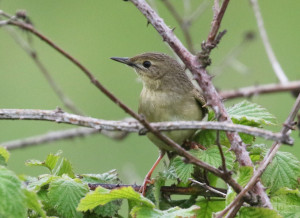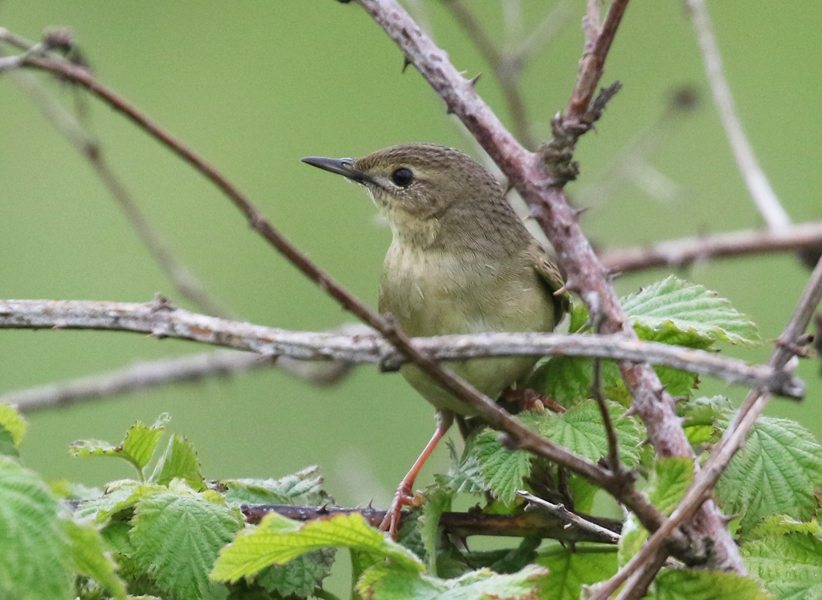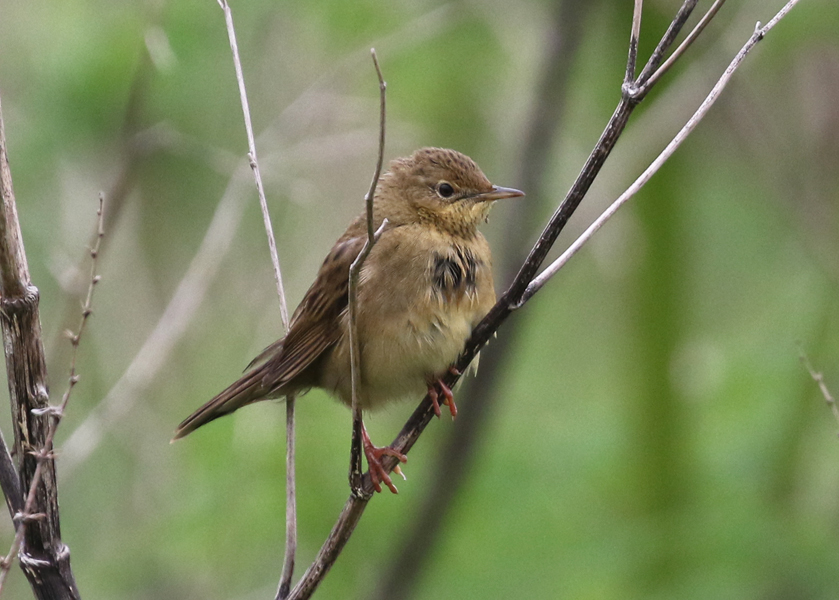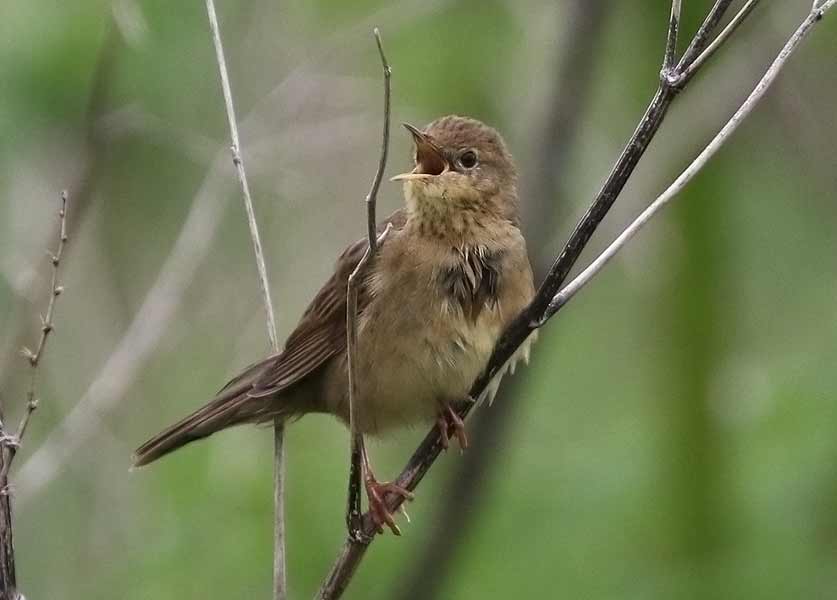
Common Grasshopper Warbler, Locusteall naevia, is the bird that is usually simply known as “Grasshopper Warbler” throughout Europe. This bird is just one of a group of similar species in the family Locustellidae that are found in many parts of the world and generally these birds are skulking and hard to see. However, when they arrive on their breeding grounds they freqently sing and while this does not necessarily make them easy to see, it does at least give birders a clue as to where to look.
Common Grasshopper Warbler is not exactly a common bird in Britain but it is probably more abundant than most bird watchers realize. Due to its skulking nature and habit of singing in the very early morning and late evening a lot of birders will walk straight past a bush or tufty area of grass where one is silently lurking. Having seen a few Grasshopper Warblers over the years I have learned the type of habitat this species of Locustella likes and in the area of SE England I am in there are several sites to look for them and over the last few weeks I have been fortunate to see a few of them at a couple of local places.
The first location I visited to look for Grasshopper Warbler was Swanscombe Marshes. I had been given a tip off that there were some residing there so I went there in the afternoon a few weeks ago. I chose a still, fairly sunny day to maximise the chance of being able to hear a singing bird. I found an area of rough grass, containing some bramble patches and a few hawthorn bushes and waited, listening.
The song of Common Whitethroat was obvious from all around and the call of some flypast Shelduck could also be heard over the hum of industrial noise from nearby. Eventually, though, I heard the insect-like rattling that I was listening for coming from a large bramble patch. I got as close as I could and stood watching until the bird emerged and gave me some nice views although I was too slow with the camera.
I went back a week or so later with photographer Michael Wong and went back to the same spot, finding the same Common Grasshoper Warbler quite quickly as it was singing in the early morning. With patience we were able to see this bird several times skulking around and perching in the open performing its “reeling” song.
Finding this bird was quite a highlight of my birding year so far and its discovery really highlighted to me how important finding the right habitat is in finding secretive birds like this. You can read more about Common Grasshopper Warbler breeding habitat selection here – Grasshopper Warbler Locustella naevia breeding habitat in Britain.
Seeing a Grasshopper Warbler is great, getting a photo of one is really good but getting some video of one was the next step and I was lucky enough to achieve this a few days later at RSPB Rainham Marshes just across the River Thames in London/Essex. I used one of the photos I obtained at Swanscombe as the title image for some video I captured of the bird at Rainham doing its reeling song, sounding very much like the grasshoppers that have given their name to this bird.
After enjoying a morning of birding seeing Common Cuckoo, Eurasian Hobby, Corn Bunting, Cetti’s Warbler, Marsh Harrier and much more I found another area of rough grass interpsered with small bushes and as if by magig, a Grasshopper Warbler was busy singing.
May is probably the best time to see Common Grasshopper Warbler in Britain as they are at their most vocal after arriving from their wintering grounds. That is not to say they do not sing in other months, I found one singing in South Wales in July a few years ago, but for anyone hoping to find this species then May and early June, in the very early morning, will bring the highest probability of success.
If you like learning about families of birds like this then I cannot recommend highly enough this book – Reed and Bush Warblers.


 May 21st, 2021
May 21st, 2021  Nick
Nick 



 Posted in
Posted in  Tags:
Tags: 









